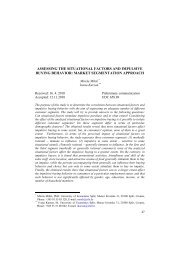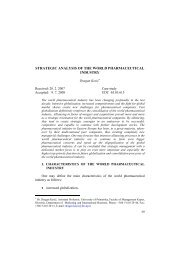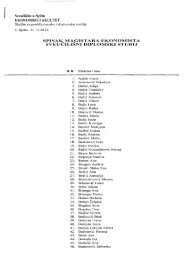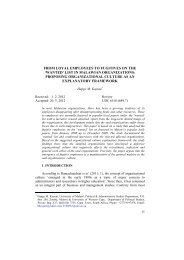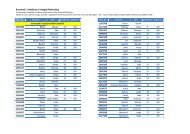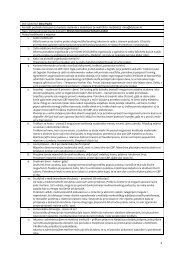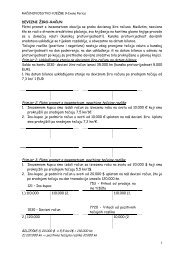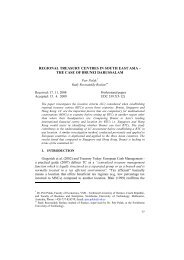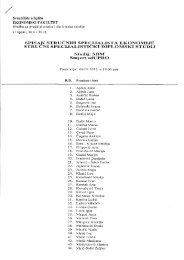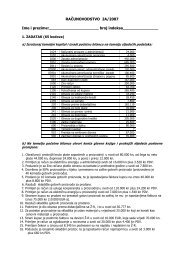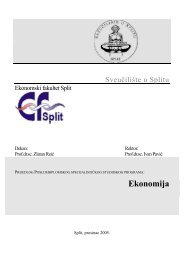TESTING VRIN FRAMEWORK: RESOURCE VALUE AND ...
TESTING VRIN FRAMEWORK: RESOURCE VALUE AND ...
TESTING VRIN FRAMEWORK: RESOURCE VALUE AND ...
- No tags were found...
Create successful ePaper yourself
Turn your PDF publications into a flip-book with our unique Google optimized e-Paper software.
Management, Vol. 17, 2012, 2, pp. 51-64A. Talaja: Testing <strong>VRIN</strong> framework: Resource value and rareness as sources of competitive…competitive market and thus, according to Barney, possess a sustainablecompetitive advantage, however, at the same time, it can generate only anaverage, normal profit, which means that, according to Peteraf (1993), there isno sustainable competitive advantage. As a response to Foss and Knudesen's(2003) critique, Peteraf and Barney (2003) provide definition of competitiveadvantage that is consistent with those by Porter (1985), Barney (1991) andPeteraf (1993). According to Peteraf and Barney (2003), a company hascompetitive advantage when it is able to create greater economic value.Economic value is defined as the difference between the perceived benefitsgained by the buyers and the economic cost to the company. There are multipleways of achieving competitive advantage, which means that, to achieve it, acompany does not have to be the best in all dimensions, but it must be superiorin value creation (Peteraf and Barney, 2003).The resource-based view (RBV), as one of the most widely acceptedtheories of competitive advantage, focuses on relationships between company’sinternal characteristics and competitive advantage (Spanos and Lioukas, 2001).It is based on the assumption that companies within an industry areheterogeneous in terms of resources they control. Since resources may not beperfectly mobile, heterogeneity can be long lasting (Barney, 1991). Accordingto Barney (1992, 1995) resources and capabilities include financial, physical,human and organizational assets that a company uses to develop, manufactureand deliver products and services to customers. Financial resources includedebt, equity, retained earnings, etc. Physical resources include machines,manufacturing plants and buildings. Human resources relate to the skills,knowledge, ability to make judgments, risk-taking propensity and wisdom ofindividuals associated with the company. Organizational resources are history,connections, confidence, organizational structure, formal reporting structure,management control systems and compensation policies (Barney, 1992, 1995).Barney (1991) develops the so-called <strong>VRIN</strong> framework which definescharacteristics resources need to posses in order to enable competitiveadvantage to be achieved. According to <strong>VRIN</strong> framework, valuable, rare,imperfectly imitable and not substitutable resources have the potential forcreating sustainable competitive advantage. The value of resources lies in theirability to neutralize threats and enable company to exploit opportunities thatarise in a business environment, i.e. resources are valuable if they enable acompany to design and implement strategies that improve its efficiency andeffectiveness. It is important to emphasize that the value of resources has to beestimated in the context of corporate strategy and the specific environment inwhich the company operates. Resource rareness implies that competitors do not53



